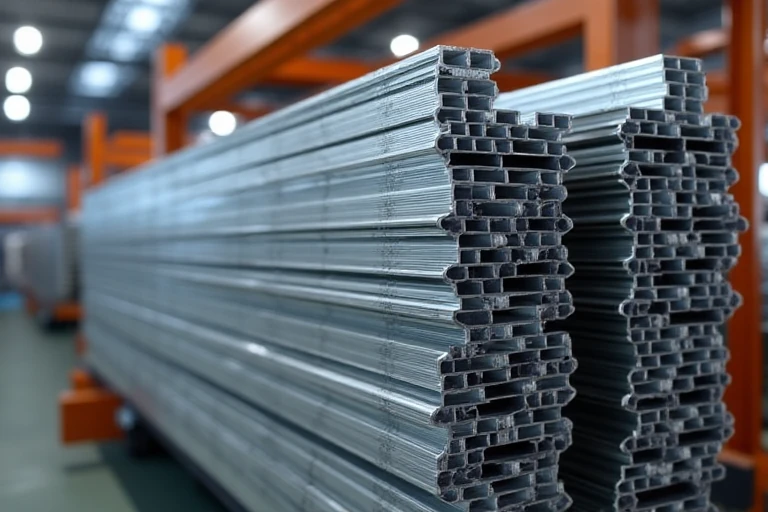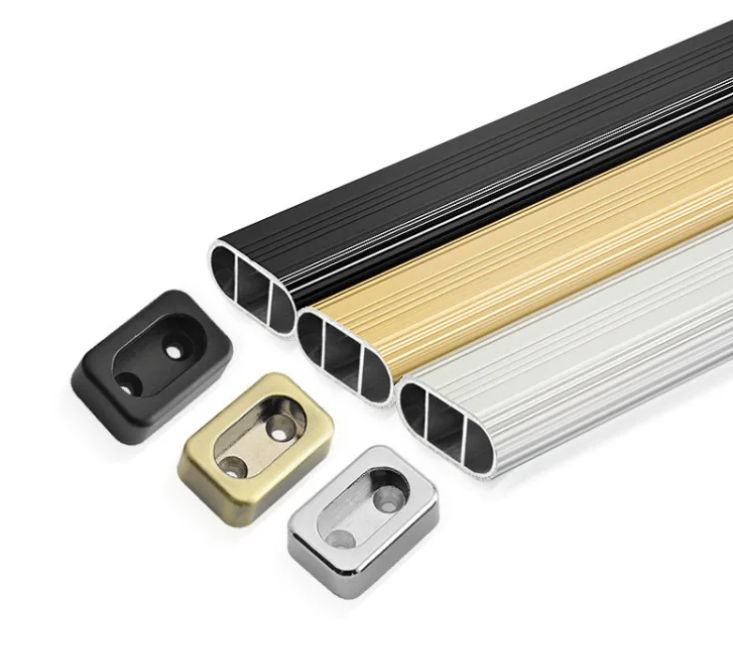Aluminum vs Stainless Steel Cabinets: Which is Better?
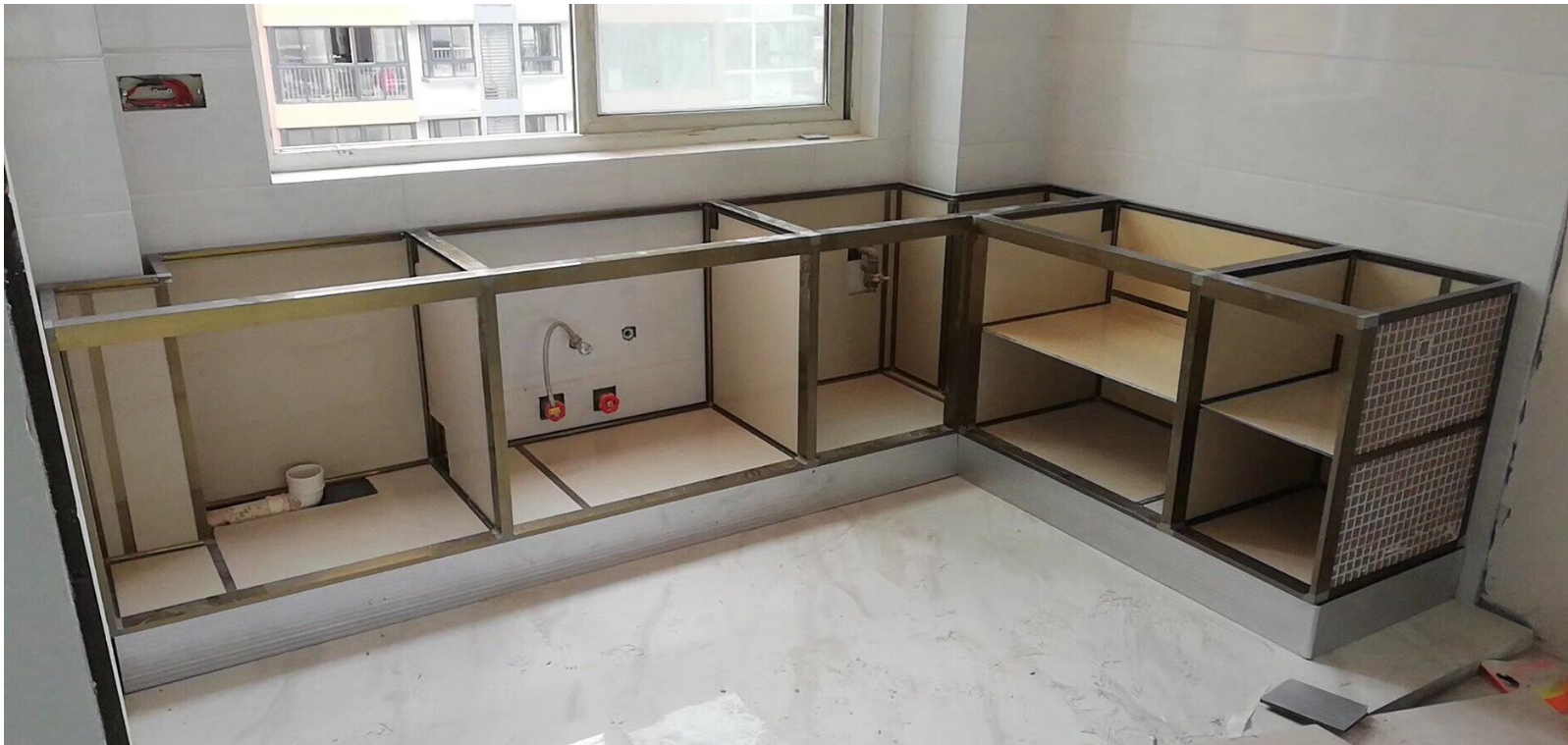
Metal cabinets are gaining popularity in kitchens and outdoor spaces. Homeowners often ask a direct question—should they choose aluminum cabinets or stainless steel?
The answer depends on several clear factors:
- Durability: Aluminum resists rust and is lightweight. Stainless steel handles impacts and heavy use better.
- Maintenance: Aluminum hides smudges and wipes clean fast. Stainless steel needs more frequent cleaning to remove fingerprints.
- Style: Aluminum offers more color choices. Stainless steel creates a classic, professional look.
- Cost: Aluminum cabinets usually cost less than stainless steel.
- Best Use: Aluminum excels outdoors and in modern spaces. Stainless steel suits busy kitchens and premium interiors.
Consider an example. If you want colorful, low-maintenance cabinets for your patio, aluminum may fit best. If you need cabinets that stand up to heavy cooking and last decades, stainless steel might be the right investment.
This guide explains the strengths and drawbacks of each material. You will find concise, clear comparisons and expert advice for selecting the ideal cabinets for your kitchen or outdoor project.
Related product: aluminum kitchen cabinets
Quick Comparison Table
| Feature | Aluminum Cabinets | Stainless Steel Cabinets |
|---|---|---|
| Weight | Lightweight | Heavier |
| Durability | Very good; softer, can dent | Excellent; harder, less prone to dents |
| Corrosion Resistance | Exceptional, won’t rust | Exceptional, but surface rust possible |
| Heat Resistance | Good | Superior |
| Aesthetic Flexibility | Available in more finishes/colors | Mostly metallic, some textures |
| Maintenance | Very easy, doesn’t show fingerprints | May show fingerprints, easy to clean |
| Price | Usually more affordable | Generally more expensive |
| Eco-friendliness | Highly recyclable | Highly recyclable |
| Best Uses | Outdoor, contemporary kitchens | Professional, luxury, indoor/outdoor |
What is Aluminum?
Aluminum is a lightweight metal that resists rust and corrosion. It weighs about one-third as much as steel, making it easier to handle during installation or remodeling.
This metal forms a natural oxide layer on its surface. This layer acts as a protective barrier against moisture and environmental damage. As a result, aluminum cabinets won’t warp, peel, or rust over time.
Manufacturers shape aluminum into cabinets using extrusion or sheet forming. These processes create strong, precise panels and edges. Most aluminum cabinets receive a powder-coated or anodized finish. These coatings add scratch resistance and allow a wide range of colors and textures—from bold shades to subtle brushed or satin looks.
Aluminum’s strength-to-weight ratio makes it popular in industries like aerospace and marine. In kitchen design, this means cabinets can be both durable and light. Homeowners benefit from cabinets that combine style with easy maintenance.
Aluminum cabinet advantages:
- Rustproof in humid and coastal environments
- Lightweight for easier handling and installation
- Variety of durable finishes and colors available
- Suitable for indoor and outdoor use
- Durable enough for everyday use, yet stylish and modern
If you want corrosion-resistant, low-maintenance cabinets that offer design flexibility, aluminum is a strong choice for many kitchen or outdoor projects.
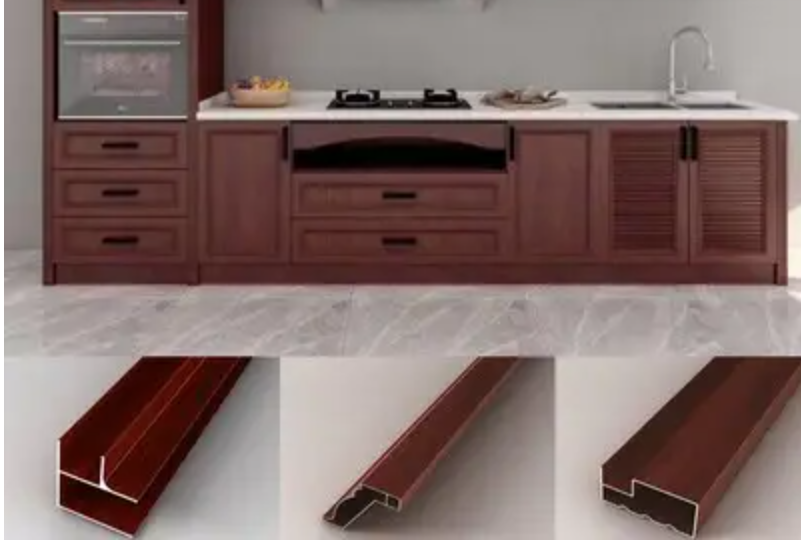
What is Stainless Steel?
Stainless steel is an alloy of iron, chromium, and nickel. Chromium makes up at least 10.5% of the metal and forms a protective layer that prevents stains, rust, and heat damage. This protection makes stainless steel ideal for challenging environments such as busy kitchens and outdoor cooking areas.
Stainless steel cabinets handle daily wear and tear with ease. They resist dents, high temperatures, and spills. In commercial kitchens and hospitals, stainless steel’s non-porous surface prevents bacteria buildup and simplifies cleaning.
Cabinet finishes vary widely. You can choose brushed steel for a matte, fingerprint-resistant look or mirrored steel for a shiny, modern style. Patterned options add texture and hide scratches.
There are two common stainless steel grades for cabinets:
- 304 Grade: The standard choice for indoor kitchens. It balances corrosion resistance with a polished appearance.
- 316 Grade: Contains extra molybdenum, enhancing resistance to salt, chemicals, and harsh weather. Ideal for outdoor kitchens near the coast or in heavy-use areas.
Chefs and designers appreciate stainless steel for its strength, longevity, and low maintenance needs. It stays unaffected by heat and tough stains, making it a reliable choice for both professional and home kitchens.
Key features of stainless steel cabinets include:
- Strong resistance to heat, stains, and corrosion
- Non-porous surfaces that support food safety
- Multiple finishes that suit various styles
- Suitable for heavy-use indoor and outdoor applications
Stainless steel cabinets offer durability and style for homeowners who want lasting value without frequent upkeep.
Durability & Lifespan
Aluminum and stainless steel cabinets both last much longer than wood or MDF, especially in wet or outdoor environments. However, they differ in strength and wear resistance.
Aluminum Cabinets
Aluminum resists rust completely due to its natural oxide layer. This makes it ideal for humid or coastal areas. It handles moisture without damage or warping. However, aluminum is softer and can dent if hit by heavy objects.
Aluminum cabinets typically last 15 to 20 years with minimal care. Their lightweight nature simplifies installation and reduces strain on walls or structures.
Stainless Steel Cabinets
Stainless steel resists dents and scratches better than aluminum. It stands up to heavy daily use without losing shape or finish. Properly selected stainless steel lasts 20 years or more.
Grade 304 stainless steel suits most indoor kitchens, offering strong corrosion resistance. Grade 316 contains added molybdenum, improving resistance to salt and acids in coastal or harsh environments. Without the correct grade, stainless steel can develop surface rust when exposed to saltwater or chemicals.
Consider your kitchen’s environment and usage to pick the right material. Aluminum suits outdoor, wet, or coastal areas. Stainless steel works best where heavy use demands tough, lasting surfaces.
Resistance to Heat, Water, and Corrosion
Aluminum cabinets resist rust completely due to their natural oxide layer. This makes them ideal for wet environments like outdoor kitchens and poolside areas. Aluminum withstands normal kitchen heat but can warp under extreme temperatures, such as direct contact with a grill.
Stainless steel cabinets tolerate higher heat without damage. They repel water, steam, and common kitchen chemicals effectively. For salty coastal environments, 316-grade stainless steel offers superior protection against salt corrosion and harsh weather.
Neither aluminum nor stainless steel warps, rots, or fades from sun or rain exposure. Both maintain shape and appearance over years of outdoor use.
Summary:
- Aluminum is rustproof and excels in moist conditions
- Aluminum can distort at very high temperatures
- Stainless steel withstands stronger heat and resists water damage
- 316 stainless steel suits salty, coastal areas
- Both metals resist sun and rain damage without warping
Choose aluminum for corrosion resistance in humid or wet settings. Choose stainless steel for heavier heat exposure and coastal durability.
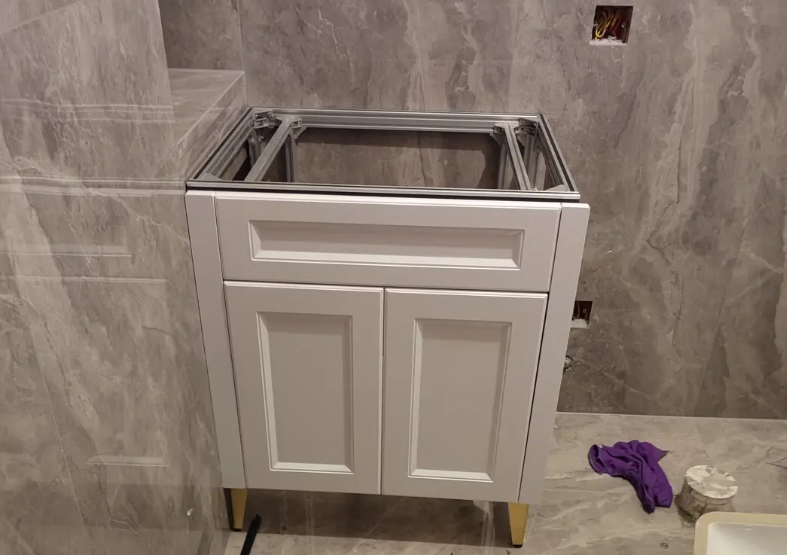
Aesthetic Options & Customization
Aluminum Cabinets
Aluminum offers a wide range of finishes and design choices. Manufacturers apply powder-coated colors in matte, satin, high-gloss, or textured styles. You can also find wood-grain effects that mimic natural finishes with better durability. Aluminum accepts anodizing and custom printing, making it ideal for homeowners who want bold color or unique patterns.
Common aluminum aesthetic options:
- Powder-coated finishes in custom colors
- Wood-look textures for rustic or natural themes
- Matte, satin, and gloss surfaces
- Custom graphics or prints for branding or personalization
Stainless Steel Cabinets
Stainless steel focuses on clean, modern aesthetics with metallic finishes. These surfaces often appear in brushed, mirrored, or embossed textures. Stainless steel looks professional and high-end but offers fewer color variations unless powder-coated. Its neutral tone works well in minimalist or contemporary kitchens.
Common stainless steel finishes:
- Brushed: subtle texture, hides fingerprints
- Mirror polished: high shine, reflects light
- Embossed or patterned: adds depth and character
- Powder-coated (optional): adds color but limits texture options
Which Offers More Visual Flexibility?
Aluminum wins for customization and color range. You can match it to bright, modern kitchens or blend it into earthy outdoor spaces.
Stainless steel wins for sleek, timeless appeal. It fits best in high-end, restaurant-style layouts or clean, minimalist homes.
Cost & Value Over Time
Aluminum cabinets usually cost less than stainless steel. Their lighter weight lowers production and shipping expenses. This makes aluminum a budget-friendly option for large projects and outdoor kitchens.
Stainless steel cabinets carry a higher upfront price due to stronger materials and finishes. They appeal to luxury markets and boost resale value in high-end homes and commercial spaces.
Both materials save money over time. They resist warping, rot, and water damage that often affect wood or painted cabinets. Aluminum holds color well outdoors with minimal maintenance. Stainless steel endures heavy use indoors for decades, making it ideal for busy kitchens.
Choose aluminum to save money now, especially for lightweight or outdoor needs. Choose stainless steel for long-term durability and higher property value. Match your choice to your budget, kitchen use, and how long you plan to stay in your space.
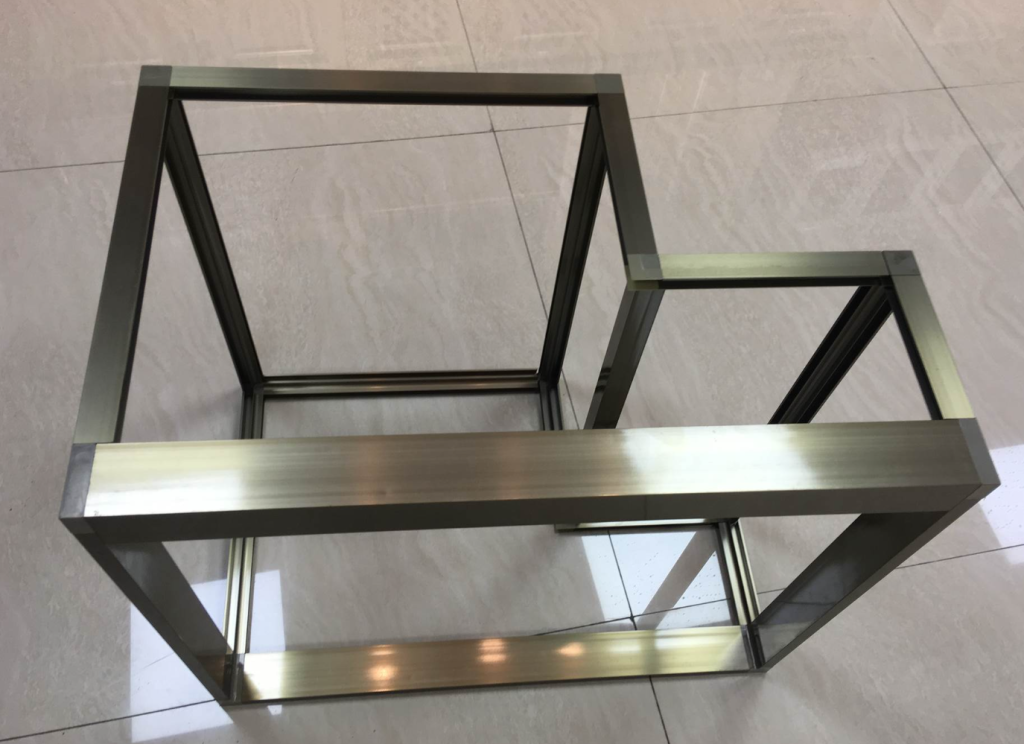
Environmental Impact & Health
Recyclability and Sustainability
Aluminum is one of the most recyclable materials on the planet. Modern aluminum cabinets often contain up to 70% recycled content. Recycling aluminum uses about 5% of the energy needed to produce new aluminum, which significantly lowers its environmental footprint.
Stainless steel is also widely recyclable. Most stainless steel in the U.S. contains 60% or more recycled material. Its long lifespan reduces the need for replacements, and it can be fully recycled at the end of its use.
Health and Indoor Air Quality
Both aluminum and stainless steel are non-toxic and hypoallergenic. They do not release volatile organic compounds (VOCs), which are common in some wood and laminate cabinets. This makes them safer for indoor air quality, especially in kitchens where air circulation may be limited.
Food-grade options are available for both materials. These surfaces are non-porous, easy to sanitize, and resist bacteria—ideal for food preparation zones or homes with children or allergy-sensitive guests.
Summary of Benefits
- Recycled Content: High in both aluminum and stainless steel
- Recyclable at End of Life: 100%
- VOC Emissions: None
- Allergen Safety: Hypoallergenic materials
- Food Safety: Food-grade options available
Maintenance & Cleaning
Aluminum Cabinets
Aluminum cabinets are easy to maintain. Wipe them with mild soap and water to remove dust, oil, or food stains. Their surfaces resist fingerprints and smudges, making them ideal for high-use areas.
Key advantages:
- Requires no special cleaners
- Smudge-resistant surfaces
- Quick cleanup with basic supplies
Aluminum is a practical choice for households that want low-maintenance cabinets with minimal upkeep.
Stainless Steel Cabinets
Stainless steel needs more frequent cleaning. Smudges, streaks, and fingerprints are easier to see, especially on polished finishes. To clean, use a stainless steel cleaner or a diluted vinegar solution. Avoid abrasive pads, as they can scratch the surface.
Cleaning guidelines:
- Use microfiber cloths or non-abrasive sponges
- Apply stainless steel cleaner or vinegar-water mix
- Wipe along the grain to maintain shine
Stainless steel requires more attention, but the payoff is a sleek, polished look that stands out in modern kitchens.
Which Is Easier to Maintain?
Both resist stains and prevent grime buildup. Aluminum requires less effort and works better for households that value fast, low-maintenance cleaning routines. Stainless steel takes more care but rewards you with a professional finish when properly maintained.
Installation & DIY Considerations
Aluminum cabinets weigh less than stainless steel, which makes handling and installation easier. This lighter weight reduces labor time and costs. Aluminum cabinets work well for DIY projects, especially when installing upper units or in spots where weight limits matter.
Stainless steel cabinets are heavier and bulkier. They often require professional installers to handle, align, and secure them properly. Wall-mounted or large stainless steel units particularly benefit from expert installation to avoid damage and ensure safety.
Aluminum suits those who want faster, less physically demanding installs and greater flexibility. Stainless steel demands skilled installation to protect the cabinet’s finish and ensure stability. Choose the material based on your comfort level with handling heavy items and the complexity of your project.
Where Each Material Excels
Indoor Kitchens
Stainless steel cabinets suit busy, professional kitchens. Their hard surfaces resist stains and bacteria, making food preparation safer. This material handles heat and heavy use without damage. Stainless steel fits well with modern and industrial kitchen designs.
Aluminum cabinets work best in light-use spaces or where color and style matter. Their lightweight nature simplifies installation, especially for upper cabinets. Aluminum offers many color and finish options, making it ideal for contemporary or vibrant kitchens.
Outdoor Kitchens
Aluminum cabinets resist corrosion in wet or salty environments. They weigh less, easing installation on decks or rooftops. Aluminum holds up well near pools and coastal areas without rusting or deteriorating.
316-grade stainless steel provides the toughest protection outdoors. It withstands salt, heat, and harsh weather better than aluminum. Though heavier, this grade suits beachfront homes or outdoor kitchens that face intense use and exposure.
Summary Table
| Use Case | Aluminum Cabinets | Stainless Steel Cabinets |
|---|---|---|
| Indoor Kitchens | Lightweight, colorful, easy install | Durable, heat-resistant, hygienic |
| Outdoor Kitchens | Rustproof, lightweight, weather-resistant | Heavy-duty, salt and heat resistant (316 grade) |
Choose aluminum for colorful, lightweight, corrosion-resistant cabinets. Choose stainless steel for durability, hygiene, and high-heat tolerance. Match material choice to your kitchen’s demands and design goals.
Common Mistakes to Avoid
1. Choosing 304 Stainless Steel for Saltwater Environments
304-grade stainless steel is not ideal for coastal areas. It corrodes over time when exposed to salt air or pool chemicals. Use 316-grade stainless steel for outdoor kitchens near the ocean or chlorine-heavy environments.
2. Underestimating Long-Term Maintenance Costs
Wood and painted cabinets may look good at first, but they need ongoing care—repainting, sealing, or refinishing. Aluminum and stainless steel resist water and heat and reduce maintenance costs over the long term.
3. Ignoring Finish Compatibility
Cabinet finishes should match surrounding appliances and surfaces. A satin aluminum cabinet next to gloss-black appliances can clash. Always compare samples before finalizing your design.
4. Skipping Noise-Dampening Features
Metal drawers and doors can be noisy if they don’t have soft-close hinges or liners. If you want a quiet kitchen, make sure your cabinets include sound-dampening hardware.
5. Overlooking Food-Safe Material Standards
For kitchen use, choose food-grade stainless steel or aluminum. These materials prevent contamination and meet hygiene standards. Check product specifications before buying.
Buyer Guide: How to Choose the Right Cabinets
Define Core Requirements
Start with four basics:
- Budget
- Location (indoor or outdoor)
- Style preference (colorful vs. metallic)
- Expected use (light vs. heavy traffic)
This helps narrow your options quickly and effectively.
Prioritize Corrosion Resistance for Outdoor Use – Choose aluminum for rain, humidity, or poolside setups. Use 316 stainless steel for beach houses or high-exposure outdoor kitchens. Both resist rust, but 316 offers better salt protection.
Check Product Warranties – Look for warranties covering both material and finish. A 5- or 10-year warranty shows confidence in the product’s durability.
Know When to Hire a Pro – Stainless steel cabinets are heavy. Professional installation ensures proper anchoring, level alignment, and a clean finish. Aluminum cabinets are easier for DIY installation.
Verify Key Details Before Purchase
- Confirm measurements, hinge type, and mounting options
- Check compatibility with your kitchen layout or appliances
- Get samples to test finish and color in your space
Quick Buyer Checklist
- Use 316 stainless steel near saltwater or pools
- Choose aluminum for low-maintenance outdoor use
- Match cabinet finish with appliances for visual consistency
- Include soft-close hardware for quiet operation
- Confirm certifications for food safety
- Compare product warranties and installation options
Choose based on your space, style, budget, and environment. The right decision now saves time, money, and frustration later.
Frequently Asked Questions (FAQs)
Stainless steel cabinets typically cost more up front due to higher material and manufacturing costs.
Aluminum cannot rust. Stainless steel is highly resistant but can develop surface oxidation if scratched or exposed to salty/acidic conditions without proper grade.
Modern cabinets use noise-dampening materials; choose soft-close hardware for the quietest operation.
Aluminum can dent with hard impacts. Stainless steel is tougher but still not fully dent-proof.
Yes. For coastal settings, choose aluminum or 316 stainless steel. Both are ideal for outdoor kitchens.
Final Thoughts
Choosing between aluminum and stainless steel cabinets depends on your priorities: weight, color options, installation ease, durability, and usage.
If you want colorful, easy-to-install cabinets that resist rust, choose aluminum. For long-lasting, heavy-use kitchens with a professional look, stainless steel fits best. Match your choice to your space and lifestyle to enjoy cabinets that perform and shine for years.


